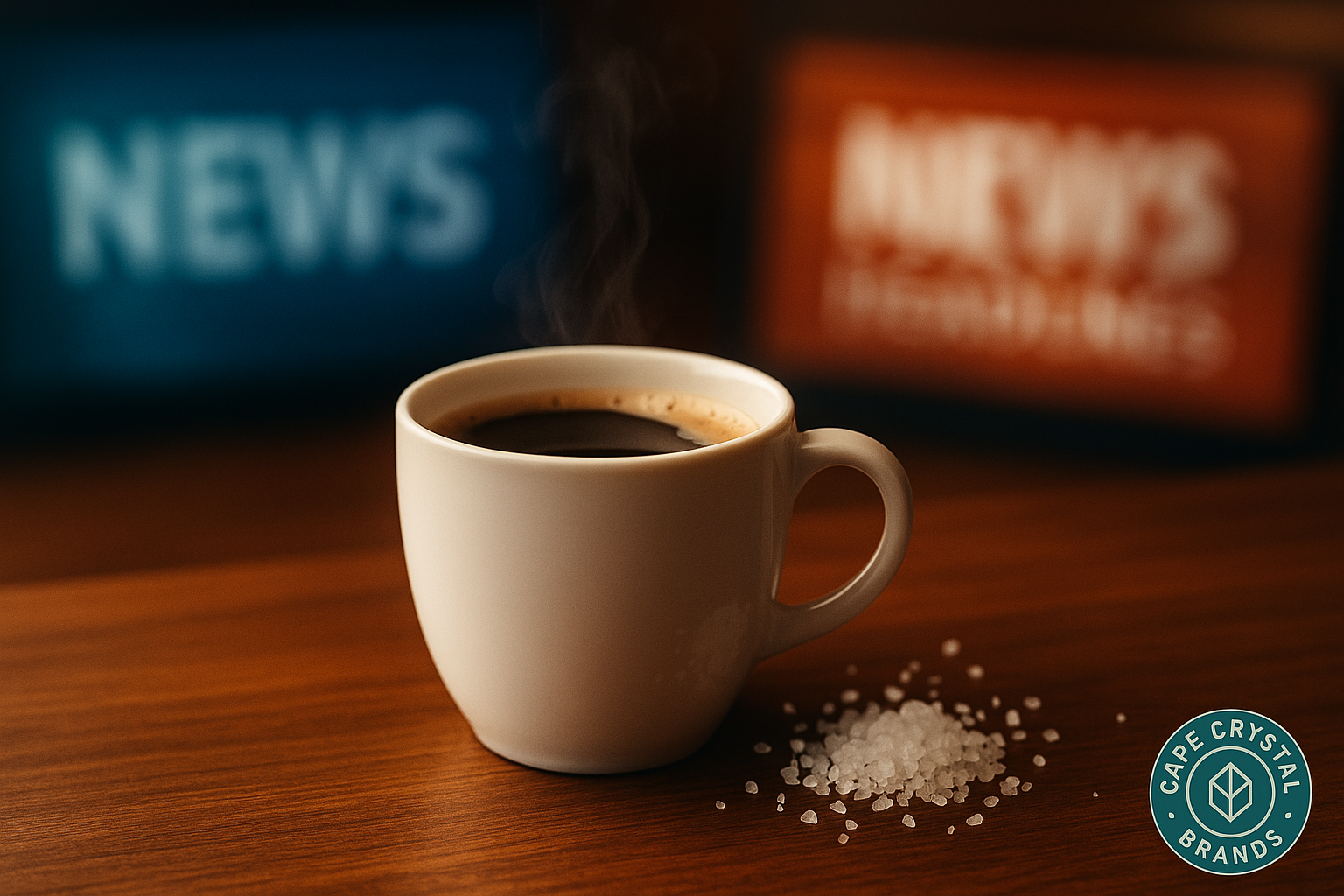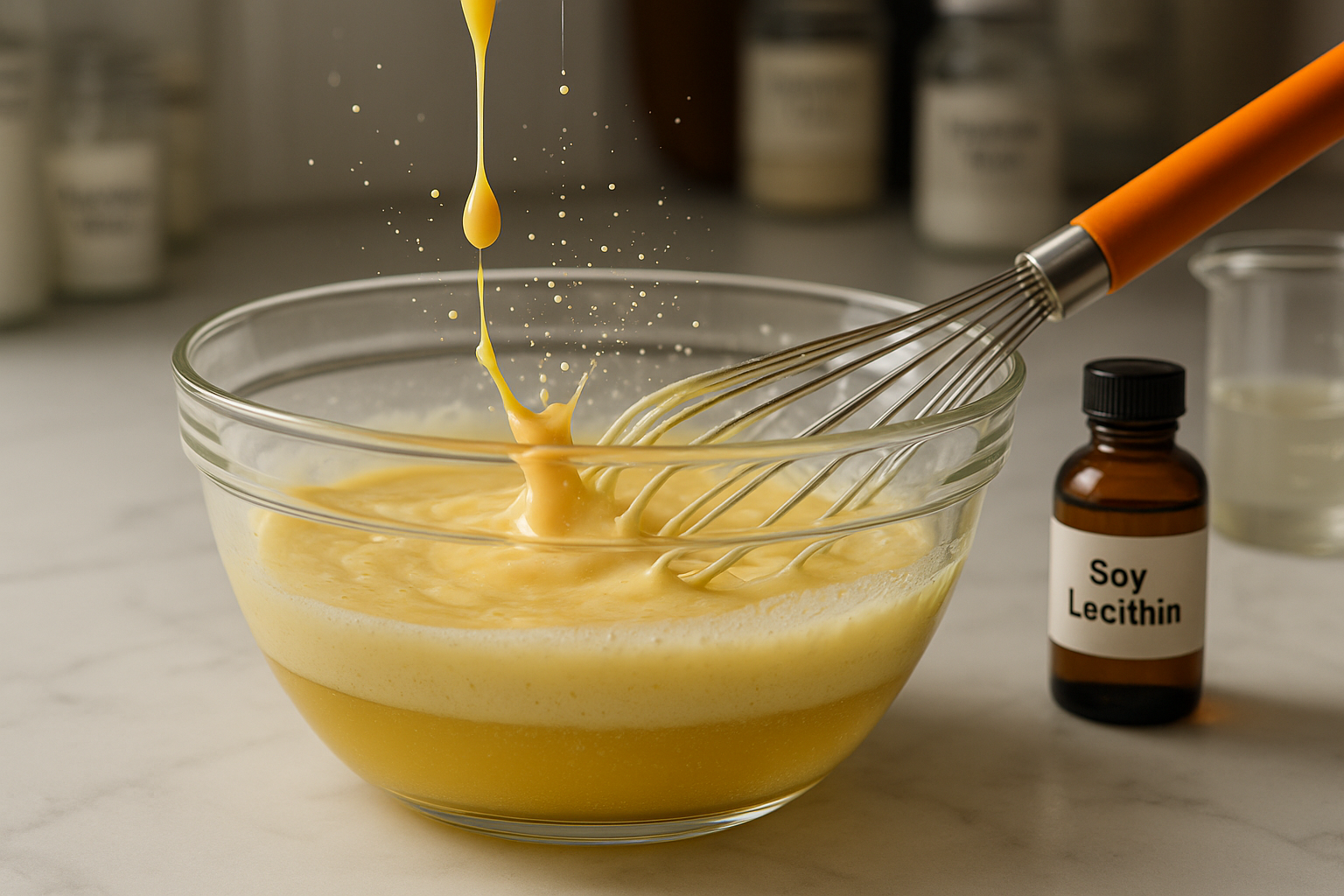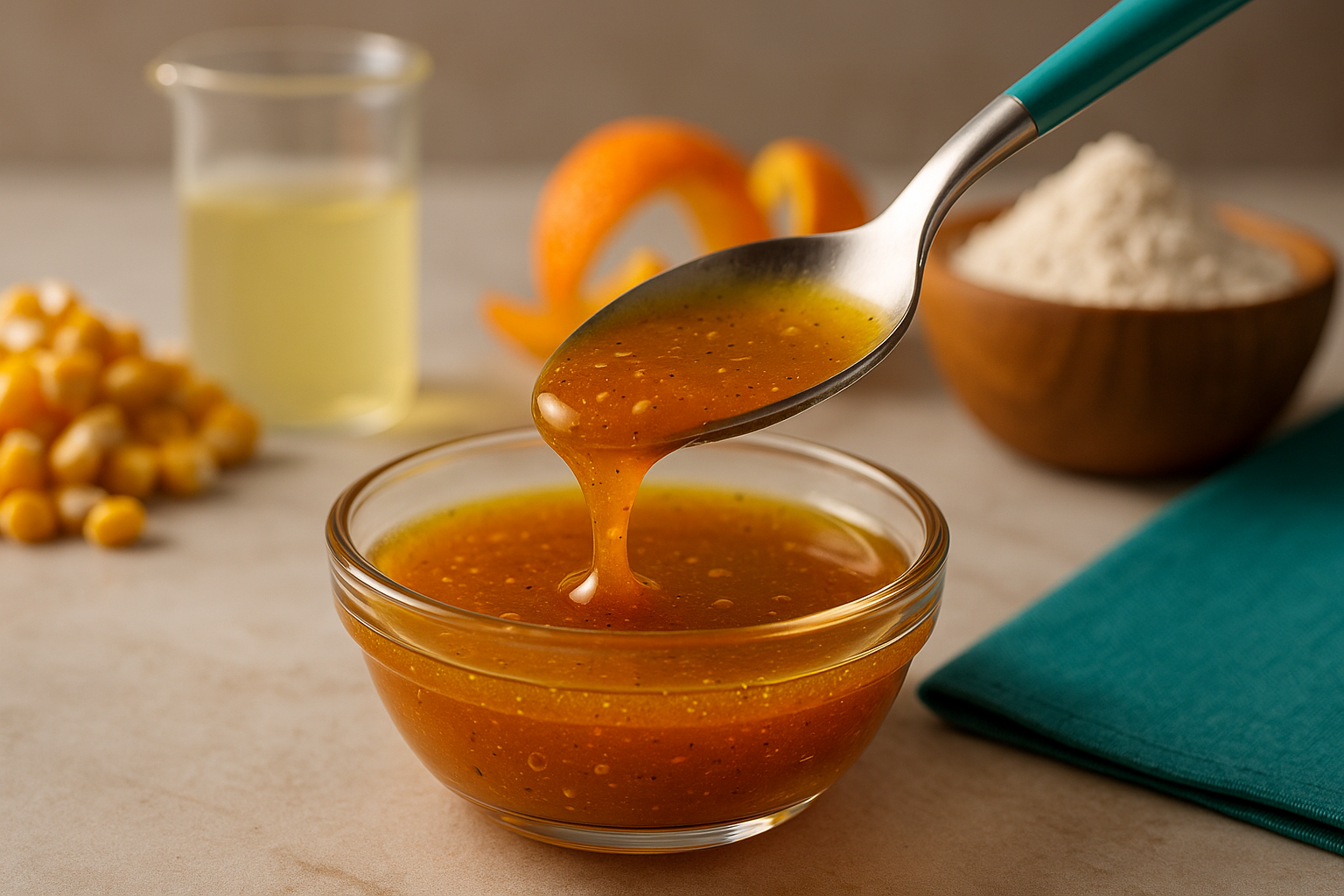
Why Everyone's Talking About Crunch: The Texture Food Trend Explained
SUBSCRIBE TO OUR BLOG
Promotions, new products, and recipes.
Why Everyone's Talking About Crunch: The Texture Food Trend Explained
Quiet is out. Sweet-and-spicy has calmed down. Now our taste buds are screaming for "crunch", gritty textures, and noisy flavor experiences. The crunch texture food trend is taking over restaurant menus, grocery store shelves, and social media feeds—with everything from extra-crispy fried chicken to crunchy coffee toppings capturing consumer attention. But what's behind this textural obsession, and why does that satisfying crunch feel so irresistible?
You don’t need a deep fryer or a chef’s lab to ride this wave. With a few kitchen-friendly, natural “texture helpers” like agar agar, fruit pectin, xanthan gum, guar gum, sodium alginate, citric acid, and sunflower lecithin, you can craft crunchy, creamy, or chewy textures on demand—without changing flavor.
Various crunchy foods showcasing the crunch texture food trend including crispy fried chicken, crunchy snacks, and textured desserts.
The crunch texture food trend spans everything from savory snacks to desserts with textural contrast.
The Psychology Behind Our Crunch Texture Food Trend Obsession
According to Tastewise, an artificial intelligence-powered consumer research platform, social discussions involving the term "crunchy" have increased by about 13% over the past year. This significant uptick reveals more than just a passing fad—it points to deeper psychological and sensory connections.

Person enjoying crunchy food with visible satisfaction, demonstrating the sensory appeal of the crunch texture food trend.
Why We Crave That Satisfying Crunch
Our attraction to crunchy textures isn't random. Research suggests several factors drive this sensory preference:
Sensory Satisfaction
The auditory feedback from crunchy foods creates a multi-sensory eating experience that engages more than just taste. This sensory richness makes eating more satisfying and memorable.
Freshness Perception
We instinctively associate crunch with freshness. Crisp vegetables, just-baked bread, and freshly-fried foods all signal quality and peak condition through their texture.
Emotional Comfort
Tastewise's analysis found that the number one reason fueling the need for "crunch" was an association with comfort. "This insight reframes crunch not just as energetic or exciting, but as comforting," says Alon Chen, cofounder and CEO of Tastewise.
"I consider crunch a texture, not a flavor, and it gives you an experience," explains Sally Lyons Wyatt, global executive vice president and chief industry adviser for market research firm Circana. This experiential quality is precisely what makes texture so powerful in today's experience-driven food culture.
Innovative Examples of the Crunch Texture Food Trend
Food brands and restaurants are finding creative ways to incorporate satisfying textures across categories. Here's how the crunch revolution is manifesting across the culinary landscape:

Assortment of innovative crunchy food products showing the diversity of the crunch texture food trend.
Restaurant Innovations
Restaurants are elevating the sensory eating experience through textural contrast. According to Datassential, the word "crispy" now appears on 62% of U.S. restaurant menus, signaling the importance of texture in menu descriptions.
Fast-Food Crunch
Taco Bell's Toasted Cheddar Street Chalupas feature a crispy cheddar shell that adds textural contrast. The chain is "finding new ways to deliver cheesy, crispy crunch the way only Taco Bell can," according to a company spokesperson.
Beverage Texture
Crème brûlée espresso martinis with a hard sugar surface that you crack before sipping bring the textural experience to cocktails, creating an interactive element that enhances the drinking experience.
Textural Layering
Fine dining establishments are incorporating crispy elements as garnishes—from tempura herbs to dehydrated vegetable chips—creating multiple texture points throughout a dish for sensory contrast.
Across fast-casual and cafes, you’ll spot crunchy salad toppers, crackly croissant “tops,” and drink add-ins (from boba to cookie crumble) that add literal “bite” to beverages. Operators aren’t just chasing flavor—they’re selling experience.
Retail Product Innovations
The grocery aisle is also embracing the crunch texture food trend with innovative products that deliver novel textural experiences:
- Crunchy dehydrated vegetables (mushrooms, okra)
- Fermented nuts with enhanced crispness
- Roasted chickpeas with flavor innovations
- Mushroom chips with satisfying crunch
- Korean seaweed chips with thicker texture
- Crunchy chocolates with textural inclusions
- Ziba Afghan trail mix with mulberries and apricot kernels
- Edible aquatic plants like crispy seaweed and sea moss
At home, you can mirror these wins with a few pro tricks: use sunflower lecithin so spices cling better to roasted chickpeas or chips; stabilize creamy dips with a pinch of xanthan gum so they contrast crisply with crunchy dippers.
Cultural Influences on the Crunch Texture Food Trend
The global appeal of crunchy textures is evident in how different cultures have long celebrated and perfected various forms of crunch. These international influences are now shaping the broader texture trend.

Peruvian cuisine featuring crunchy elements like chulpi corn and crispy onions, influencing the global crunch texture food trend.
According to Tastewise's analysis, Peruvian cuisine has emerged as the fastest-growing culinary context for crunchy dishes, with chulpi (roasted) corn, crispy onions, and fried yucca being the top ingredients fueling the crunch texture in these dishes.
Asian cuisines have long celebrated textural contrast, with Japanese tempura, Korean fried chicken, and Chinese crispy duck all emphasizing the importance of crunch. These traditions are now influencing Western culinary approaches to texture.
"International snacking is an extension of crunch. It's this idea of taking global flavors or fusion of foods and bringing it into the snacking category," explains Alyssa Vescio, Whole Foods Market's senior vice president of center store merchandising.
Social media accelerates this exchange: short-form videos celebrate not only flavors but the sound of eating—turning regional crunch icons into global cravings overnight.
5 DIY Tips to Add Crunch to Your Meals
Want to incorporate the crunch texture food trend into your home cooking? These simple techniques can add satisfying texture to everyday meals:

Homemade crispy toppings and ingredients for adding crunch to meals, demonstrating DIY applications of the crunch texture food trend.
Simple homemade ingredients can add satisfying crunch to everyday meals:
-
Master the Quick Pickle
Thinly slice vegetables like radishes, carrots, or cucumbers. Soak in a mixture of vinegar, sugar, and salt for 30 minutes. Drain and use as a crunchy topping for sandwiches, tacos, or bowls. The quick pickling process maintains crispness while adding flavor. Add a pinch of citric acid to boost bright tang and perceived crunch. -
Create Seed Blends
Mix pumpkin, sunflower, and sesame seeds. Toast with spices like cumin, coriander, or smoked paprika. Sprinkle over salads, soups, or roasted vegetables. Store in an airtight container for up to two weeks. For better spice adhesion, toss warm seeds with a whisper of sunflower lecithin. -
Air-Fry Vegetable Chips
Thinly slice sweet potatoes, beets, or kale. Toss with a small amount of oil and seasonings. Air-fry until crisp (timing varies by vegetable). Use as snacks or garnishes for protein dishes. -
Make Crispy Grain Clusters
Transform leftover grains like quinoa or rice into crunchy clusters. Mix cooked grains with a beaten egg white and seasonings, then bake at 350°F until crispy. These clusters add texture to salads, yogurt bowls, or as standalone snacks. A spoon of pectin helps bind clusters for more uniform crunch. -
Perfect Crispy Chickpeas
Drain and thoroughly dry canned chickpeas. Toss with olive oil and spices, then roast at 400°F for 20–30 minutes until golden and crunchy. These versatile crunchy bites work as snacks, salad toppers, or soup garnishes. Finish hot with seasoning + a light dust of lecithin so flavor sticks.
The Future of Food Texture Trends
As the crunch craze continues, the next wave of texture innovation won’t stop at crispy chips or crackly coatings. The future points toward multi-layered, interactive textures that surprise the eater at every bite or sip.

Think of foods that start crunchy but dissolve into creamy, or drinks with a topping you crack before sipping. Texture is evolving from a background characteristic into the star of the eating experience.
Sally Lyons Wyatt of Circana notes: “When I eat that food or drink that drink, what is that unexpected moment—through crunch, through freeze-drying, through flavors evolving while I eat? Crunch will always be a part of that.”
Looking ahead, three areas stand out:
-
Texture transformations: snacks that shift phase as you chew, or layered desserts with hidden bursts of crispness.
-
Sustainable crunch: upcycled grains, fruit pulp crisps, and plant-based fibers turned into eco-friendly crunch carriers.
-
Functional textures: crispy elements enriched with protein, fiber, or probiotics, where crunch delivers nutrition as well as sensory satisfaction.
For home cooks, this means more accessible ingredients and kits to experiment with—like agar sheets that dry into delicate shards, or pectin-bound grain clusters for healthy snacking. The “crunch revolution” is just the beginning of a broader textural renaissance.
Texture Transformations
Foods that change texture as you eat them—starting crunchy and melting away, or revealing hidden textural elements—will create multi-phase eating experiences.
Sustainable Crunch
Upcycled ingredients like vegetable pulp chips, grain by-product crisps, and other sustainable sources will provide eco-friendly crunch options.
Functional Textures
Crunchy elements that deliver functional benefits—like protein-enriched crispy toppings or fiber-packed crunchable garnishes—will combine nutrition with sensory satisfaction.
At home, expect more pantry shortcuts: agar sheets you can dry into “glass-crisp” shards, pectin fruit bites for lunchboxes, and café-style drinks kept velvety with a pinch of xanthan.
🎁 Free Download: 12 Tasty Modern Texture Recipes
Ready to try more? Grab our free booklet with 10 approachable recipes that showcase today’s texture trend—crispy agar chips, popping cocktail pearls, fruit leather, creamy plant-based yogurt, and more. Each recipe is designed for home cooks and uses natural thickeners and gelling agents from Cape Crystal.
Frequently Asked Questions About Crunch & Texture
Q1: What makes food crunchy?
Primarily structure + moisture control. Frying, baking, dehydrating, or forming thin gels that dry create a crisp matrix. Agar agar sheets can be dried into surprisingly crunchy “glass.”
Q2: How do I keep homemade ice cream from getting icy?
Use a tiny pinch of xanthan gum to reduce large ice crystals and add scoopable creaminess.
Q3: Can I add crunch to drinks?
Yes. With sodium alginate you can make popping pearls that burst when you bite—great for cocktails, mocktails, or even savory garnishes.
Q4: Are these ingredients safe?
Agar, pectin, xanthan, guar, and sodium alginate are widely used in everyday foods. Use small amounts as directed and store them sealed and dry.
Q5: Which ingredient gives the best “chew” for gummies?
For plant-based gummies, agar creates a firm, bouncy set; pectin delivers a more classic fruit-snack bite.
Q6: How do I keep spice blends stuck to roasted snacks?
Warm snacks toss better with seasonings if you add a whisper of sunflower lecithin—it helps powders cling for even coverage.
Q7: My plant-based milk separates. Fix?
Blend in a pinch of xanthan or guar gum for café-style body and stability.
Q8: What’s an easy crunchy topper for salads?
Bake crispy grain clusters: mix cooked quinoa or rice with seasoning and a spoon of pectin to bind; bake until crackly.
Q9: How can I brighten flavors without losing crunch?
A pinch of citric acid in dressings or pickles adds a vivid, tart pop that emphasizes crisp textures.
Q10: Where can I buy these ingredients?
Right here: Cape Crystal Brands — Natural Thickeners & Gelling Agents.
Embracing the Crunch Revolution
The crunch texture food trend represents more than just a passing fad—it's a recognition of texture's fundamental role in how we experience food. From fast-food innovations to fine dining garnishes, from global snack inspirations to home cooking techniques, crunch has established itself as a defining characteristic of contemporary cuisine.
As you explore this trend in your own kitchen, remember that texture is as important as flavor in creating memorable, craveable foods. Whether through simple additions like toasted seeds or more elaborate crispy elements, embracing the multi-sensory potential of crunch can transform everyday meals into extraordinary eating experiences.

|
About the Author Ed is the founder of Cape Crystal Brands, editor of the Beginner’s Guide to Hydrocolloids, and a passionate advocate for making food science accessible to all. Discover premium ingredients, expert resources, and free formulation tools at capecrystalbrands.com/tools. — Ed |
Enjoyed this post? Subscribe to The Crystal Scoop
Food-science tips, ingredient know-how, and recipes. No spam—unsubscribe anytime.
- Choosing a selection results in a full page refresh.



